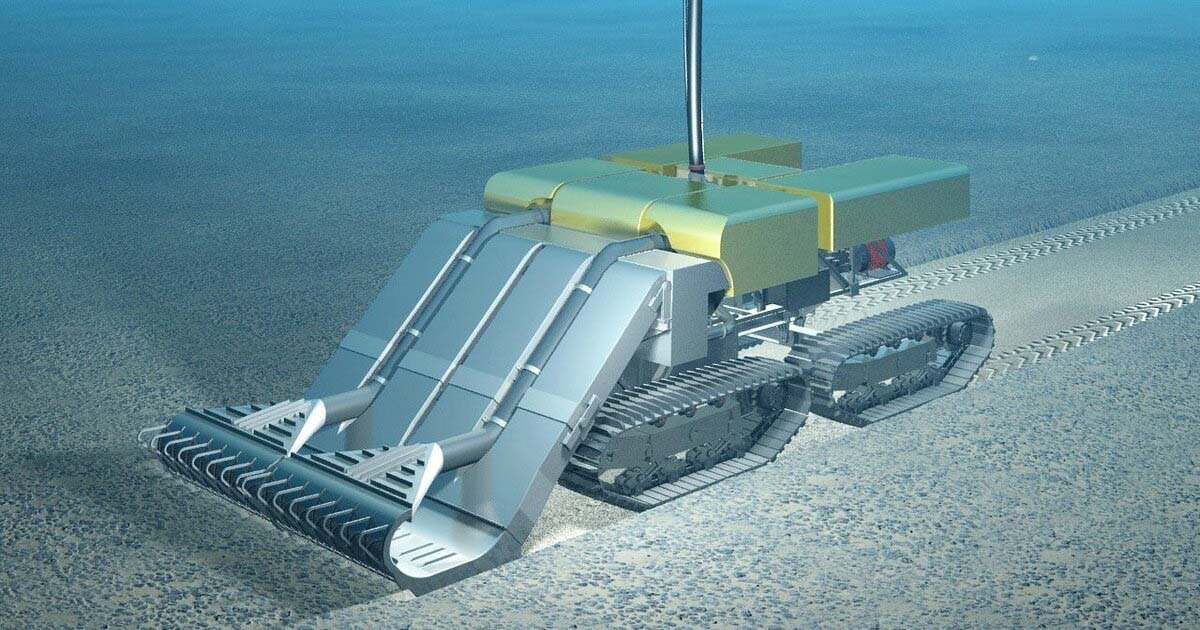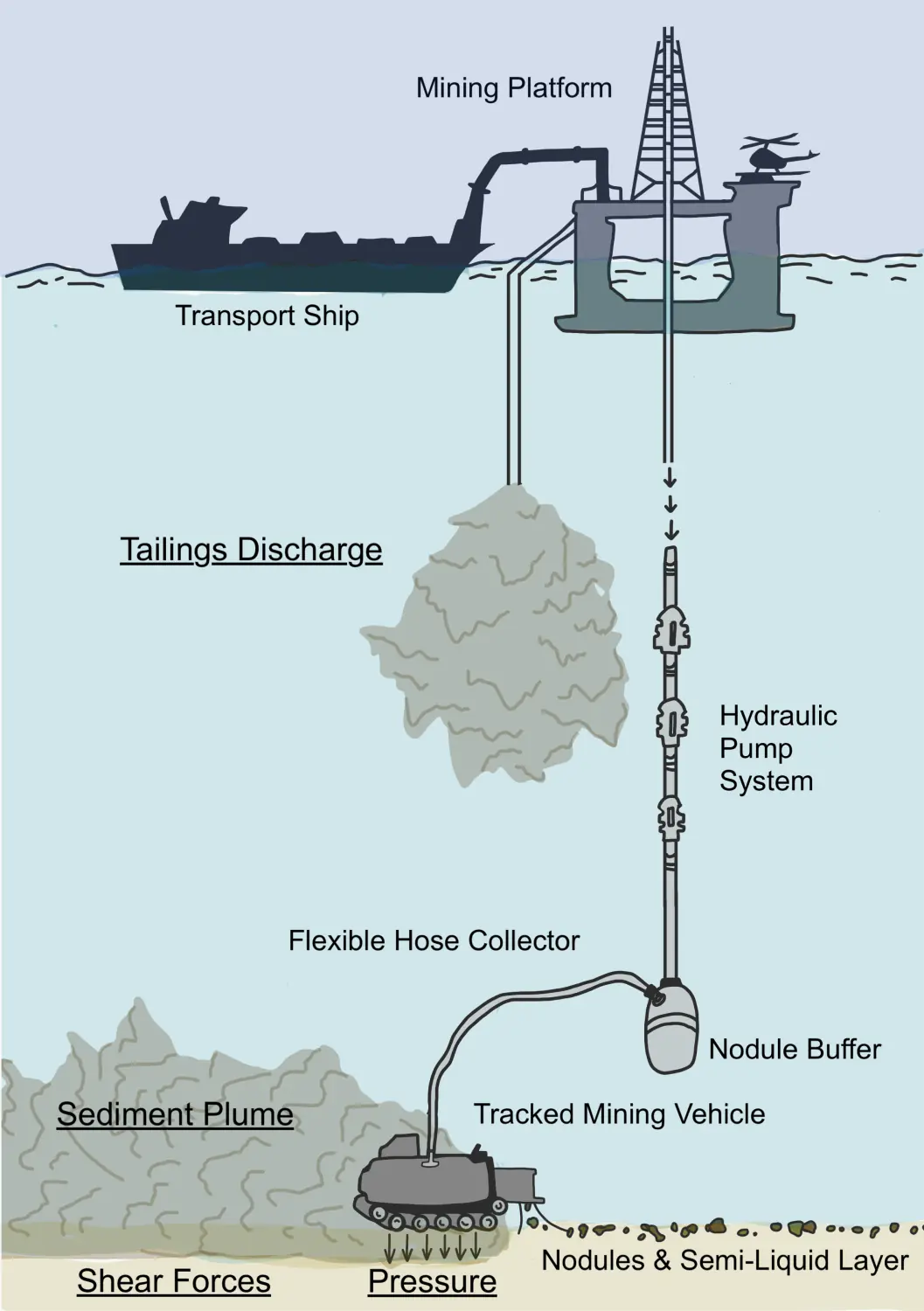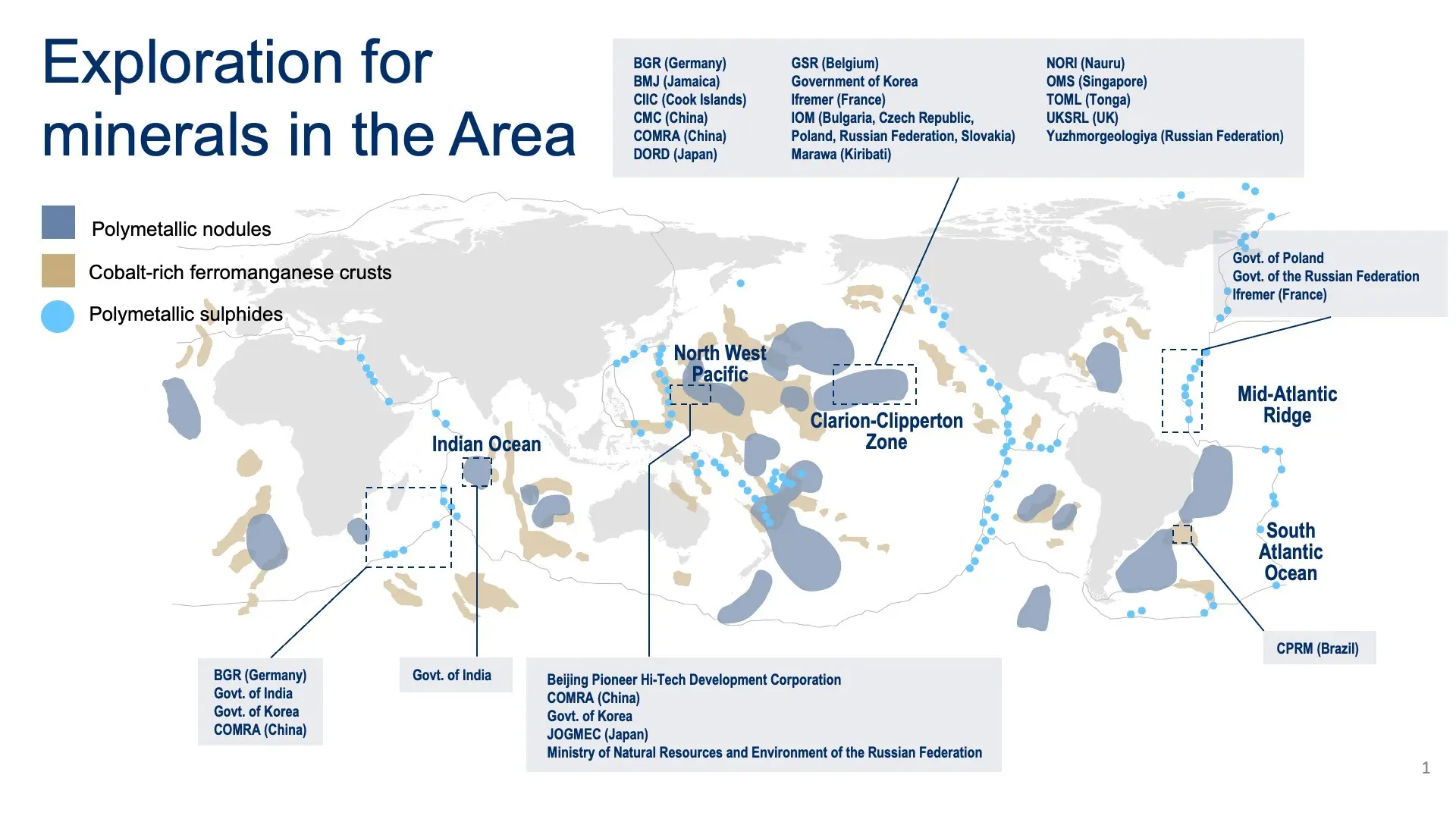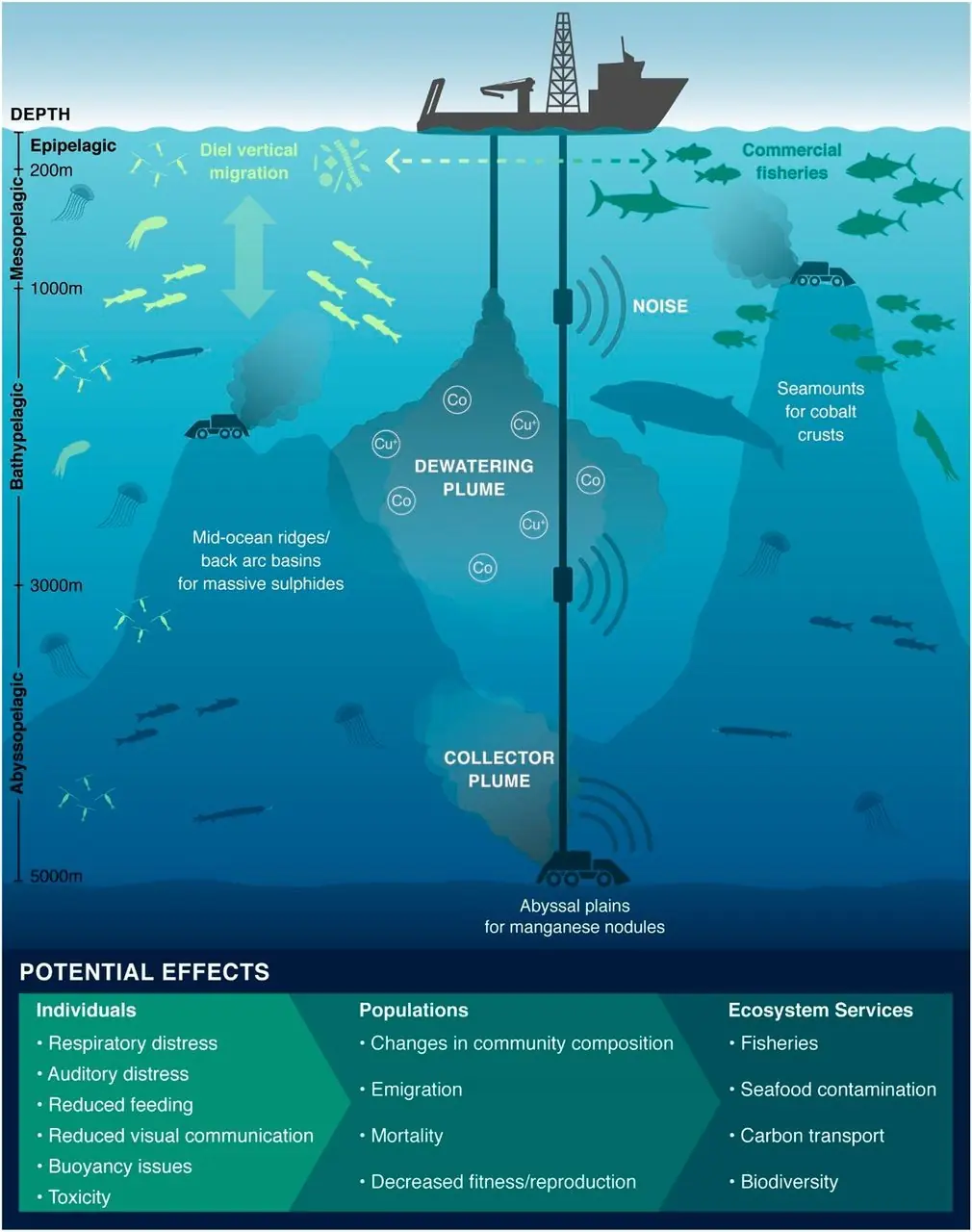
In recent years, deep sea mining has become a hot topic in the mining industry (Yanlian et al., 2022). As traditional mineral reserves on land become depleted, companies and governments are turning to the depths of the ocean for new sources of valuable minerals such as copper, nickel, cobalt, and gold. However, this new frontier in mining also comes with its own set of challenges and controversies.

One of the biggest challenges (Jemma 2020) in deep sea mining is the extreme environment of the ocean floor. Depths can reach over 4500 m, with pressures over a thousand times greater than at the surface. The deep ocean is also very dark and cold, with limited energy sources. These conditions make it difficult and expensive to operate mining equipment and also pose significant risks to the marine environment and its inhabitants.
Deep-sea mining has significant potential benefits despite these difficulties. The vast mineral deposits on the ocean floor are thought to be worth trillions of dollars, according to the United Nations. By extracting these minerals, nations may be able to increase their revenue and satisfy the rising demand for minerals in high-tech sectors like electronics, renewable energy, and electric vehicles.

However, the environmental impact of deep sea mining is a major concern (Li 2022). The deep sea is home to unique and vulnerable ecosystems, including coral reefs, deep sea vents, and cold seeps, that are vital to the ocean's food chain and play a role in regulating the Earth's climate. If these ecosystems are disturbed, it could have long-term effects on the health and diversity of the ocean.

In response to these concerns, the International Seabed Authority (ISA) was established in 1996 to regulate and manage the exploration and exploitation of minerals in the deep sea (Ellycia et al., 2023). The ISA sets guidelines for deep-sea mining operations, including environmental impact assessments and the establishment of marine protected areas.
Despite these efforts, the development of deep sea mining is still in its early stages, and there is still much work to be done to ensure that it is done in a sustainable and responsible manner. Some companies and governments are pursuing more environmentally friendly mining techniques, such as those that use robots and remotely operated vehicles to minimize the impact on the ocean floor (Sharma 2011).
In conclusion, deep sea mining presents both opportunities and challenges. It has the potential to provide a new source of valuable minerals and revenue for countries, but it also raises concerns about the impact on the marine environment and its delicate ecosystems (Marta et al. 2020).As the demand for minerals continues to grow, it is essential that deep sea mining is regulated and managed in a responsible and sustainable way, to ensure that we can reap the benefits of this new frontier while preserving the health and biodiversity of the ocean for generations to come.
Bibliography





